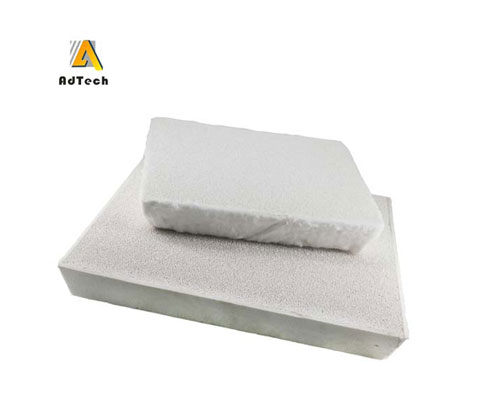Foam ceramic is a ceramic with a porosity of up to 70% to 90%, has a three-dimensional network framework, and is a new type of porous material instead of the connectivity of the metal pore structure. Foam ceramics were used as a bacterial filter material in the early 1870s. Due to its low permeability, large specific surface area, uniform density, low thermal conductivity, high temperature resistance, corrosion resistance, and other characteristics, it is widely used in metallurgy, chemical industry, environmental protection, energy, biology and other sectors, as a filter, separation, gas, sound-absorbing cloth, Chemical fillers, biological materials such as ceramics and catalyst carriers. With the development of foam ceramic preparation technology, the emergence of high-performance foam ceramic materials has greatly broadened the application range of foam ceramics. The following will introduce some new foam ceramics applications.
Foam Ceramics Applications
Catalyst Carrier
Foam ceramics have good adsorption capacity and activity. Through the foam ceramic coating catalyst, the reaction fluid is channelized, which will greatly improve the efficiency and reaction rate. Due to its high specific surface area, good thermal stability, wear resistance, resistance to poisoning, and low density. Ceramic foam has been widely used in automotive exhaust catalytic converters. In addition to being a catalyst carrier, it can also be used as other functional carriers, such as drug carriers, microcrystalline carriers, and gas storage. Adtech is Foam Ceramic Filter Manufacturer, the raw material of ceramic foam filter is foam ceramic. The foam ceramic filter is an economical way for purifying molten aluminum.
Energy-saving Insulation Material
Due to the closed pores of the foam ceramic, its thermal efficiency is reduced, and the convection effect of heat transfer in the process is reduced, so that the foam ceramic has the characteristics of low thermal conductivity and good thermal shock resistance. It is an ideal refractory material.
Foam ceramics have a large specific surface area and can be used as a heat transfer material due to the large heat exchange area under high temperature conditions.

Burner
Foam ceramic materials have good heat exchange properties and can reduce flame temperature. Mixed combustion in or near the surface of inert ceramic foam can save energy and significantly reduce Co2 and NO2 emissions. At the same time, this burner can use a variety of fuels and has a wide range of adaptability.
Diffusion, Penetration and Adsorption Material
Utilizing the phenomenon of electroosmosis, it can be used as a separator for the production of hydrogen peroxide by electrolysis, which can improve battery life. Use microporous ceramics to make soil salt and moisture measuring sensors. The uniformly distributed pores of the ceramic foam have a flame retardant effect on the oxygen-acetylene combustible gas that is tempered during gas welding. It can also be made into a high-energy muffler according to the noise blocking of the pores.
In addition to the above foam ceramics applications, foam ceramics can also be made into sensors, microporous membranes, chemical tower packing, and energy-saving combustion plates for gas stoves.

